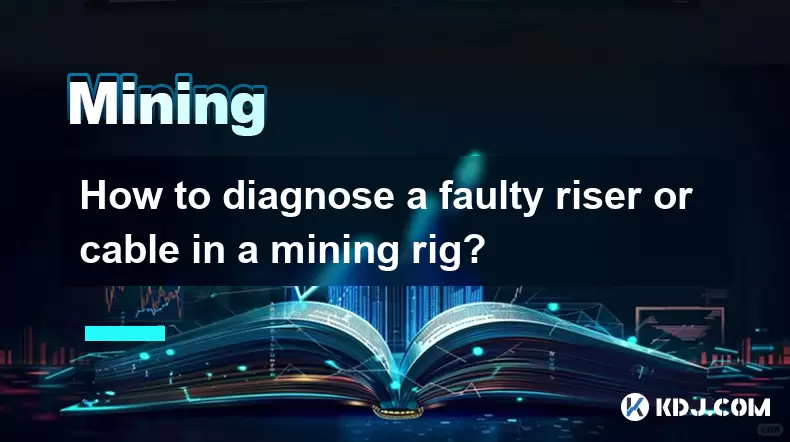-
 Bitcoin
Bitcoin $115100
1.27% -
 Ethereum
Ethereum $3675
2.71% -
 XRP
XRP $2.995
1.45% -
 Tether USDt
Tether USDt $1.000
0.02% -
 BNB
BNB $769.8
2.64% -
 Solana
Solana $168.0
3.25% -
 USDC
USDC $0.9999
-0.01% -
 TRON
TRON $0.3371
1.48% -
 Dogecoin
Dogecoin $0.2051
3.36% -
 Cardano
Cardano $0.7394
2.30% -
 Hyperliquid
Hyperliquid $38.15
0.42% -
 Stellar
Stellar $0.3966
-0.36% -
 Sui
Sui $3.486
2.93% -
 Chainlink
Chainlink $16.72
2.52% -
 Bitcoin Cash
Bitcoin Cash $568.0
4.36% -
 Hedera
Hedera $0.2440
2.59% -
 Ethena USDe
Ethena USDe $1.001
0.04% -
 Avalanche
Avalanche $22.16
2.06% -
 Litecoin
Litecoin $119.1
-0.73% -
 UNUS SED LEO
UNUS SED LEO $8.991
0.04% -
 Toncoin
Toncoin $3.232
-0.39% -
 Shiba Inu
Shiba Inu $0.00001233
2.82% -
 Uniswap
Uniswap $9.717
2.53% -
 Polkadot
Polkadot $3.664
1.85% -
 Dai
Dai $1.000
0.01% -
 Monero
Monero $281.2
-3.89% -
 Bitget Token
Bitget Token $4.350
1.55% -
 Cronos
Cronos $0.1428
5.07% -
 Pepe
Pepe $0.00001050
3.68% -
 Aave
Aave $262.3
3.54%
What is the mining pool fee for Litecoin mining?
Litecoin mining pool fees, varying from 0% to 2%, depend on the chosen pool and its services. Factors like pool size, payout methods, and additional features influence costs; thorough research is crucial for maximizing profitability.
Mar 22, 2025 at 04:22 am

Key Points:
- Litecoin mining pool fees vary significantly depending on the chosen pool.
- Fees are typically expressed as a percentage of your mining rewards.
- Understanding fee structures is crucial for maximizing profitability.
- Factors influencing fees include pool size, payout methods, and additional services.
- Choosing a pool with a transparent and competitive fee structure is vital.
What is the mining pool fee for Litecoin mining?
The question of Litecoin mining pool fees doesn't have a single answer. Unlike a fixed transaction fee on a network, pool fees are set individually by each Litecoin mining pool. This means the fee you pay will depend entirely on which pool you choose to join your hashing power with. These fees are usually presented as a percentage of the block reward you receive for successfully mining a block (or a portion thereof, depending on the pool's payout system).
The fees are essentially the compensation the pool receives for their services. These services include:
- Pooling hashing power: Combining the hashing power of many miners to increase the frequency of block discovery.
- Software and infrastructure: Maintaining the servers and software necessary for efficient mining operations.
- Payment processing: Distributing rewards to miners based on their contribution.
- Monitoring and support: Providing monitoring tools and support to miners.
How are Litecoin mining pool fees calculated?
Most pools calculate their fees as a percentage of the Litecoin block reward you earn. This percentage varies widely, typically ranging from 0% to 2%. Some pools may offer tiered fee structures, where the percentage decreases as your contribution increases. Others might have fixed fees, regardless of the amount of Litecoin mined. Always carefully review a pool's fee schedule before joining. Don't solely focus on the advertised fee; look for hidden fees or charges for additional services.
What factors influence Litecoin mining pool fees?
Several factors contribute to the variation in Litecoin mining pool fees:
- Pool size and popularity: Larger, more established pools might charge slightly higher fees due to their infrastructure costs and the demand for their services. Smaller pools might offer lower fees to attract miners.
- Payout methods: The frequency and method of payouts can impact fees. Instant payouts, for example, might incur a higher fee compared to batch payouts.
- Additional services: Some pools provide additional services like monitoring tools, dedicated support, or advanced mining strategies. These services can justify a slightly higher fee.
- Competition: The level of competition among pools directly affects fees. A highly competitive market typically results in lower fees.
How to find a Litecoin mining pool with low fees?
Finding a Litecoin mining pool with competitive fees requires research. Start by comparing the fee structures of several popular pools. Many websites and forums dedicated to cryptocurrency mining provide comparisons and reviews. Consider factors beyond just the fee percentage, such as the pool's hashrate, uptime, payout frequency, and reputation within the community. A pool with a high hashrate generally implies a higher chance of frequent block rewards, potentially offsetting a slightly higher fee.
- Check multiple pool websites: Visit the official websites of different Litecoin mining pools and examine their fee schedules meticulously.
- Read online reviews: Look for independent reviews and discussions on forums and cryptocurrency communities to gauge the reputation and reliability of different pools.
- Consider pool size: While larger pools may have slightly higher fees, they also offer higher chances of finding blocks more frequently.
- Compare payout methods: Evaluate the speed and associated fees for different payout methods offered by the pools.
Are there any hidden fees in Litecoin mining pools?
While most reputable pools are transparent about their fees, it's always prudent to scrutinize the terms and conditions. Some pools might have hidden fees or charges for additional services. These could include charges for withdrawals, technical support, or specialized features. Make sure you understand all aspects of the fee structure before committing your hashing power to a specific pool. Transparency is key. Choose a pool that clearly outlines all costs associated with their services.
Frequently Asked Questions:
Q: Can I mine Litecoin without joining a pool?
A: Yes, you can, but it's extremely difficult and unlikely to be profitable. The probability of solo mining a block is significantly lower due to the competition from large mining operations.
Q: What are the typical payout methods for Litecoin mining pools?
A: Common payout methods include PPS (Pay Per Share), PPLNS (Pay Per Last N Shares), and PROP (Proportional). Each method has its own advantages and disadvantages regarding risk and reward.
Q: How often do Litecoin mining pools typically pay out rewards?
A: Payout frequencies vary greatly, ranging from daily payouts to weekly or even monthly payouts. This depends on the pool's policies and the chosen payout method.
Q: Do all Litecoin mining pools charge the same fees?
A: No, Litecoin mining pool fees are set independently by each pool and can vary significantly, ranging from 0% to over 2%.
Q: Are there free Litecoin mining pools?
A: Some pools might advertise "no fees," but they often make their profit through other means, such as transaction fees or by selling mining data. Scrutinize any claims of "free" services carefully.
Disclaimer:info@kdj.com
The information provided is not trading advice. kdj.com does not assume any responsibility for any investments made based on the information provided in this article. Cryptocurrencies are highly volatile and it is highly recommended that you invest with caution after thorough research!
If you believe that the content used on this website infringes your copyright, please contact us immediately (info@kdj.com) and we will delete it promptly.
- BlockDAG, Litecoin, and Cardano: Charting the Course in Crypto's Dynamic Waters
- 2025-08-07 09:09:06
- Fireverse Token: Igniting a Musical Revolution in Web3
- 2025-08-07 08:27:45
- Ethereum, L2 Withdrawals, and Decentralization: A New Yorker's Take
- 2025-08-07 08:32:33
- Avalanche vs. Ruvi AI: Daily Sales Tell a Story of Crypto Disruption
- 2025-08-07 06:29:35
- DeSoc: The Crypto to Buy Now for a Decentralized Future (and Maybe 43x Gains!)
- 2025-08-07 06:50:16
- Arctic Pablo Coin: Riding the Meme Coin Wave with a Deflationary Twist
- 2025-08-07 07:18:13
Related knowledge

What are the differences between mining on Windows vs. Linux?
Aug 06,2025 at 11:29pm
Overview of Cryptocurrency Mining PlatformsCryptocurrency mining involves using computational power to solve complex cryptographic puzzles and validat...

Can you mine cryptocurrency using solar power?
Aug 07,2025 at 12:00am
Understanding the Basics of Cryptocurrency MiningCryptocurrency mining involves validating transactions on a blockchain network by solving complex cry...

How to build a mining rig inside a PC case?
Aug 06,2025 at 11:01pm
Understanding the Basics of a Mining Rig in a PC CaseBuilding a mining rig inside a PC case involves transforming a standard computer chassis into a d...

How to diagnose a faulty riser or cable in a mining rig?
Aug 07,2025 at 01:49am
Understanding the Role of Riser Cables in Mining RigsIn a cryptocurrency mining rig, riser cables serve as the bridge between the motherboard and the ...

How to set up a mining farm with multiple rigs?
Aug 07,2025 at 12:38am
Understanding the Basics of a Multi-Rig Mining FarmSetting up a mining farm with multiple rigs begins with understanding the core components involved ...

How to use a server PSU for a crypto mining rig?
Aug 06,2025 at 08:39pm
Understanding Server PSUs and Their Relevance to Crypto MiningCrypto mining rigs demand stable, high-wattage power supplies to run multiple GPUs effic...

What are the differences between mining on Windows vs. Linux?
Aug 06,2025 at 11:29pm
Overview of Cryptocurrency Mining PlatformsCryptocurrency mining involves using computational power to solve complex cryptographic puzzles and validat...

Can you mine cryptocurrency using solar power?
Aug 07,2025 at 12:00am
Understanding the Basics of Cryptocurrency MiningCryptocurrency mining involves validating transactions on a blockchain network by solving complex cry...

How to build a mining rig inside a PC case?
Aug 06,2025 at 11:01pm
Understanding the Basics of a Mining Rig in a PC CaseBuilding a mining rig inside a PC case involves transforming a standard computer chassis into a d...

How to diagnose a faulty riser or cable in a mining rig?
Aug 07,2025 at 01:49am
Understanding the Role of Riser Cables in Mining RigsIn a cryptocurrency mining rig, riser cables serve as the bridge between the motherboard and the ...

How to set up a mining farm with multiple rigs?
Aug 07,2025 at 12:38am
Understanding the Basics of a Multi-Rig Mining FarmSetting up a mining farm with multiple rigs begins with understanding the core components involved ...

How to use a server PSU for a crypto mining rig?
Aug 06,2025 at 08:39pm
Understanding Server PSUs and Their Relevance to Crypto MiningCrypto mining rigs demand stable, high-wattage power supplies to run multiple GPUs effic...
See all articles

























































































